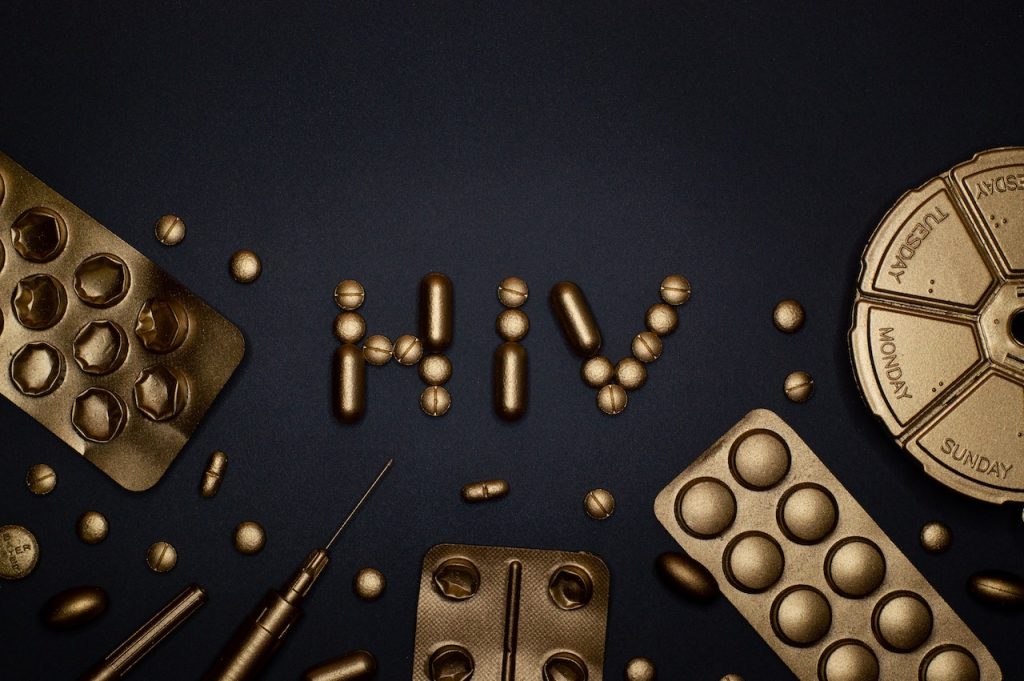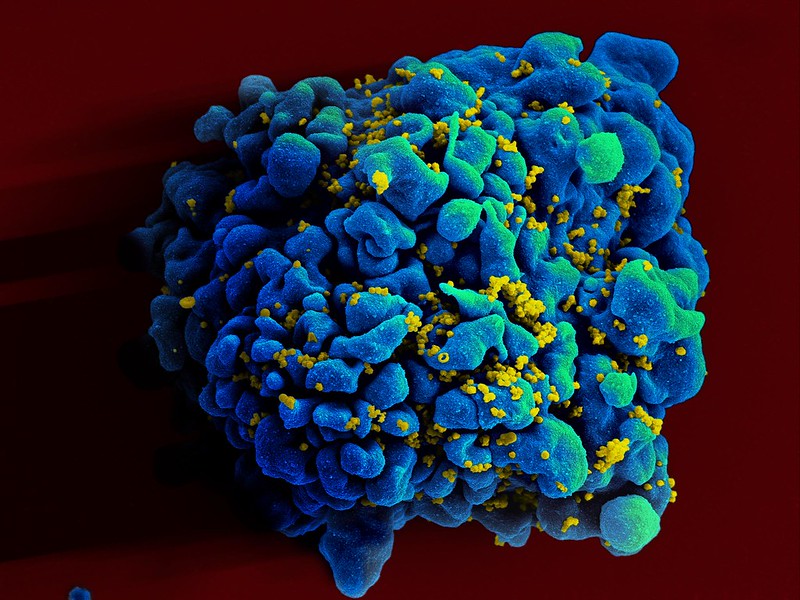Medicines Stockouts Persist in North West as Tide Turns Slowly

By Nthusang Lefafa
Despite some improvement over the past three years, the North West province continues to experience medicine shortages, according to a survey by a community clinic monitoring initiative. We unpack the latest findings and ask why shortages persist in the province.
Some people in need of HIV or tuberculosis (TB) medicines were sent home empty handed after visiting clinics in the North West. This is according to the latest survey of public healthcare services in the province published by community-led clinic monitoring group Ritshidze. The survey data was collected in April and May this year.
Of the roughly 490 000 people living with HIV in North West, around 380 000 (77%) are on antiretroviral treatment, according to figures from Thembisa, the leading mathematical model of HIV in South Africa. Antiretroviral treatment is recommended for everyone living with the virus.
According to Ritshidze, besides HIV and TB medicines, other commonly reported stockouts at clinic-level include pain medicines (such as Paracetamol and Ibuprofen), cardiac medicines (such as Aspirin), contraceptives, dry stock (gauze, bandages, needles), maternal health medicines, psychiatric medicines, and different vaccines.
Out of the 72 facilities surveyed in the province, medicine stockouts lasting one to three months were reported at 20 and stockouts lasting three to six months were reported at six.
‘Failed to comply’
The North West health department, according to Ritshidze, has failed to comply with national guidelines recommending that people living with HIV should be provided with a three or more month supply of antiretrovirals at a time. They found that 71% of people surveyed in 2024 received antiretroviral refills of three to six months – in each of the previous three years this number was below 30%. There was large differences between districts, with 97% of people surveyed in Bojanala district reporting getting a 3 month supply of ARVs — compared to 37% in Dr Kenneth Kaunda.
Giving people longer antiretroviral refills like this means people do not have to visit health facilities as often to collect their medicines.
Various factors influence giving more people longer antiretroviral refills, Tebogo Lekgethwane, Director of Media and Communications in the province’s health department, told Spotlight.
A crucial factor, he said, is that patients must have a good track record of collecting their medication as well as a history of a documented undetectable viral load. “There’s therefore a criteria for multi-month supply which includes the fact that patients should have been on treatment for six months, they are compliant and clinically stable,” said Lekgethwane.
No “crisis” of medicine shortages
While the year-on-year comparisons should not be overinterpreted – Ritshidze themselves advise caution – the numbers nevertheless provide some indication that when it comes to medicines stockouts things are trending in the right direction. The total number of stockouts in the province reported to Ritshidze plunged from 895 in 2021 to 148 in 2024 – over the same period stockouts of HIV medicines went from 115 to 19 and stockouts of TB medicines from 28 to 7.
Lekgethwane was at pains to point out that Ritshidze’s findings do not necessarily represent the actual picture of the entire province. He said that the department believes that the Ritshidze report is subjective and relies on isolated incidents. These incidents, Lekgethwane said, are often quickly addressed.
“The current provincial medicine availability report shows that medicine availability has stabilised above 80%. As at the end of June 2024, ARV stock was at 89.5%, Expanded Programme on Immunisation and Contraceptives remained above 90%, TB treatment at 79%, Oncology treatment at 81.7% and Diabetes Mellitus at 85.8%. Therefore the province does not have a crisis of medicine shortages,” he said.
Asked what exactly these percentages mean, Lekgethwane said that it indicates the actual medicines stock available in the province in relation to what is required.
A pharmacy expert consulted by Spotlight further explained that the percentage indicates the percentage of medicines on a list or in a class that is available in the province.
The way these numbers are tracked is somewhat tricky. Firstly, if a clinic is supposed to have 10 different HIV medicines in stock, but they only have 8 in stock, then its HIV medicines availability would be at 80% (having a single pack of a medicine counts as having it in stock). When many facilities are considered together, as with an entire province like North West, the key indicator looks at what percentage of those facilities have medicines availability above 90%. We thus understand the figures shared by Lekgethwane to mean that 89.5% of facilities, depots and so on in the province have HIV medicines availability above 90%.
Catching up with payments
Past medicine shortages in the province were partly attributed to companies ceasing delivery of medicine due to non-payment of invoices. While the North West health department was under National Department of Health administration in 2020, the offices at the Mmabatho Medical Depot was raided. The search uncovered a number of unpaid invoices worth millions, some dating back to 2014. One unpaid invoice was for more than R16 million.
Bolstered by a Pharmaceutical Intervention Team to address medicine shortages, Lekgethwane said the department’s payments system is now in top shape.
“Payment of suppliers has remained a priority and the finance unit has assisted the team by making good progress on payments of supplier accounts. The unit continues to investigate and intervene when suppliers indicate their account status to the pharmacies.
“This has led to an increased number of deliveries from suppliers to the depot and increased direct deliveries to pharmacies from contracted companies as well as deliveries of main orders, allocation of orders and emergency orders from the depot to the pharmacies,” he said.
“The Department can confidently confirm that the financial management of pharmaceuticals has been improved resulting in 97% of 2024/2025 accruals being paid and remaining with only two accounts that are on hold. The two accounts that are on hold will only be paid once their compliance requirements are sorted,” said Lekgethwane.
He said that the intervention team has the capacity to assess and intervene, in among others, pharmaceutical supply chain issues, system effectiveness, distribution and delivery processes, storage capacity, human resource capacity and safety issues.
Lekgethwane said the team’s first priority was to assess the Mmabatho Medical Depot before moving onto pharmacies in hospitals and clinics across the province.
Getting medicines to rural areas
While Ritshidze also raised concern around transportation for the delivery of medicines, the department said transportation has never been a challenge.
“There are contracted service providers who deliver to the Mmabatho Medical Depot and the depot delivers to hospitals. Clinics receive their medicine from their referral hospital,” said Lekgethwane.
“However, the department is currently implementing the bulk pharmacies for districts to bring medicines closer to facilities”, he added. A bulk pharmacy is a medicine storage facility which serves as a medical depot. It is situated in the districts and helps with bringing medicines closer to rural areas so that medicines do not have to be transported from major towns.
In this regard, Lekgethwane said the Dr Kenneth District Bulk Pharmacy was recently opened and soon the General De la Rey Bulk Pharmacy will open.
He said the department is confident that the use of these bulk pharmacies will improve medicine storage and distribution capacity.
Shortage of pharmacists and pharmacy assistants
The Ritshidze report found that only 9% of surveyed facilities had a pharmacist and only 18% had a pharmacist assistant. Government regulations state that either pharmacists or pharmacy assistants should be responsible for stock receiving orders and updating the stock visibility system. However, Ritshidze found that enrolled nurses, enrolled nurse assistants, facility managers, and even cleaners acted in that capacity at some clinics.
The province has a 6% vacancy rate for pharmacists while 342 are currently employed, according to the 2024/2025 health department annual performance plan tabled in the North West Provincial Legislature earlier this month. The plan states that the department’s organisational structure makes provision for 10 pharmacists to be appointed in the province for every 100 000 uninsured individuals.
The DA’s Hendriette van Huyssteen says there is a challenge of pharmacists and pharmacy assistants where there are clusters of less than 10 000 uninsured individuals (where one pharmacist would be allocated for 10 000 uninsured individuals) and the clinics servicing them are far removed from one another.
“With the NHI [National Health Insurance] being signed into law, the number of pharmacists will become only a greater challenge. The cost per pharmacist employee stands at R765 000.00 per annum. It is unclear as to where the funding would come from for the remuneration of the additional pharmacists needed under the NHI, as even the NHI Act is unclear in this regard,” she said.
Notwithstanding the issue of budget constraints, the training of more pharmaceutical staff is integral to having fully functional health systems, said Professor Andrew Robinson. He is a deputy dean in the Faculty of Health Sciences at North West University (NWU). He was previously a deputy director general in the North West health department.
“To improve the pharmaceutical skills in the province, the NWU must ensure it aligns its pharmacy training to address the skill needs of the provincial health department to ensure equitable health service delivery to all, which is necessary for successful implementation of the NHI,” he said.
Republished from Spotlight under a Creative Commons licence.





